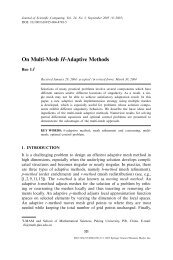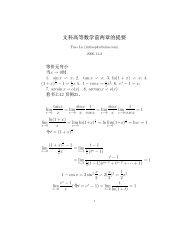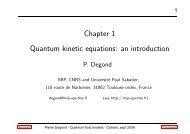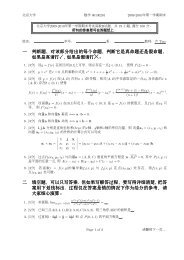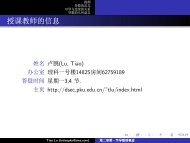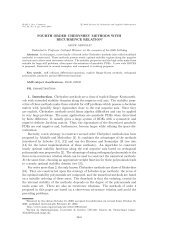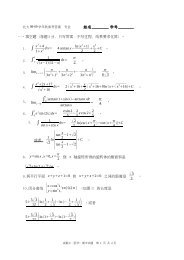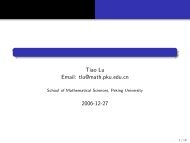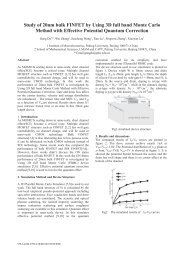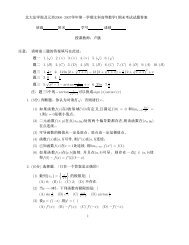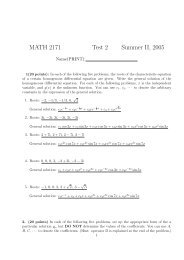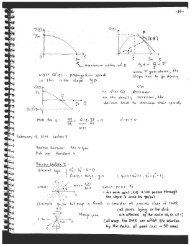Abstract
Abstract
Abstract
Create successful ePaper yourself
Turn your PDF publications into a flip-book with our unique Google optimized e-Paper software.
CHAPTER 1. OVERVIEW 24<br />
rule. The problem still remains that since y is not a grid point, the function g(x) is<br />
not evaluated at x = y. To solve this problem, we use Taylor expansions to get that<br />
and<br />
g(xv) =g(y) − h1g ′ (y)+O(h 2 1)<br />
g(xv+1) =g(y)+h2g ′ (y)+O(h 2 2)<br />
We note that since h1 ≤ ∆x and h2 ≤ ∆x, thenO(h 2 1)=O(h 2 2)=O(∆x 2 ). Further,<br />
since h1 + h2 =∆x, then by using the above Taylor expansion, we have that<br />
h2 h1<br />
g(xv)+<br />
∆x ∆x g(xv+1) =g(y)+O(∆x 2 )<br />
This gives us an estimate of g(y) using known function values that is second-order<br />
accurate with respect to ∆x. Substituting this back into the approximation of the<br />
integral gives<br />
y<br />
0<br />
g(x)dx ≈ ∆x<br />
2 g(x1)+∆x<br />
v−1<br />
which is the same as<br />
i=2<br />
g(xi)+ ∆x<br />
2<br />
y v+1<br />
g(x)dx ≈ g(xi)wi<br />
0<br />
h1 h2 h1<br />
g(xv)+ (g(xv)+ g(xv)+<br />
2 ∆x ∆x g(xv+1))<br />
i=1




